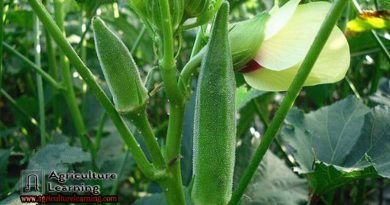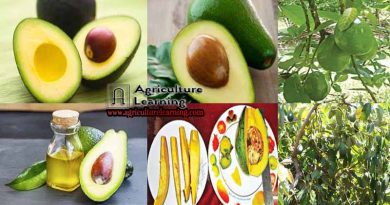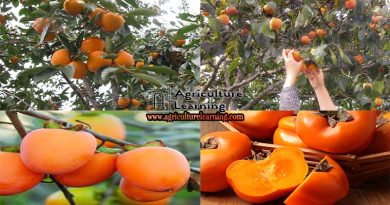Why Are My Mint Leaves Turning Black (Causes and quick fix)
Are you wondering why your mint leaves are turning black? Have you strived several options but still failed to improve its health?
Fortunately, dear gardener, you’ve come to the right place. The key to halting black spots on mint leaves is by diagnosing and understanding the necessity and ideal circumstances of growing vigorous mint plants.
Mint prefers moist soil, but the leaves may turn brown or even black due to extremely dry soil. On the other hand, overwatering may cause the leaves to rot and turn black. You may drizzle the plant or place the pot on a tray filled with pebbles and water it between watering.
Why mint leaves turning black? This may be as a result of a diseases or insects or may be due to other causes like- Overwatering & Poor Drainage, Humidity and Temperature, Over Fertilization/Fertilizer Burn and so on. By identifying the problem early, you can save your mint plant with the help of this article.
Causes and Solutions of Mint Leave Turning Black
Let’s find out the causes and how to fix each?
Overwatering and Poor Drainage
Mint plants need to be watered regularly but be aware that overwatering can lead to root rot, black or brown leaves, and stems that are too weak to hold up the plant. This is why overwatering is one of the most common issues with mint plants. And the problem is even more noticeable if you’re growing mint in containers or pots indoors.
You may have heard a general rule of thumb for watering your plants is to have moist soil, but not wet soil. Check the soil with your finger about an inch below the surface. If it’s dry, water your plant. If it’s wet, wait until the next morning and check it again.
Mint plants have sensitive roots; hence inadequate drainage systems can add stress to the roots.
Make sure you have enough drainage holes like two to three holes at the bottom of the pots/containers to allow the excess water to drain out of it. Otherwise, your mint roots will sit in water and get weak or start to rot.
Root bound Mint Plants

When a plant is root bound, the roots don’t have enough room and space.
They start growing in circles and end up constricting the others’ ability to get nutrients and water.
While the mint leaves will start turning yellow and then brown, if the problem is really bad it can get to the point where they turn black.
If you can see any roots poking out from the drainage hole, you need to repot the plant in a bigger container or divide the plant into two separate pots
Temperature and Humidity
Mint is a quick growing herb that prefers full sun to partial shade to survive.
High temperatures will cause your mint plant to dry out or burn, resulting in black leaves.
It’s important to put mint plant at the proper temperature of 69-84°F (21-29°C) where you need to shade it from direct sunlight.
It thrives well enough into warm temperatures but not in high-humidity conditions.
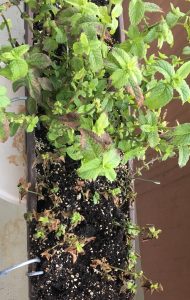
Over Fertilization
Over-fertilizing can hinder its growth and can invite weeds to grow on it.
It makes the mint vulnerable to diseases and allows the mint leaves to turn black.
To make things worse, the soil can dry out of essential nutrients at the same time.
You can easily determine the fertilizer dose by reading instructions on the fertilizer packet, or you can also ask the seller.
In addition, it would be best if you use organic fertilizer for any kinds of herbs.
How to notice If Mint Plant is Over Fertilized?
If salt or white matters accumulate on top of the soil, it seems to high-salt that indicates over-fertilization.
You can also check over-fertilization by using a pH tester.
If the pH tester shows below 7 reading, it indicates high salt and you can overcome it by mixing plain soil with it and create a potting mix.
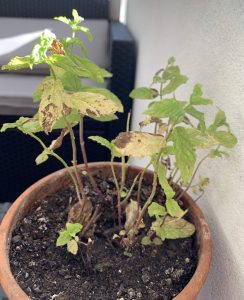
Low-light conditions
Mint leaves turn soggy and witty when exposed to low light and lower leaves can become dry and ultimately turn black.
As a result, you can still save it by cutting off the black leaves and exposing them to sunlight for 6-7 hours. However, do not overexpose it to sunlight for an extended period. If the base of the plant stem is brown or black, then it will be taught to keep alive your mint plants.
How to Fix Low light?
Do not let a insufficiency of sunlight in your home limit you. You can still grow mint and other herbs using artificial light with nope issues. If you do not have enough natural light in your flat/apartment, try to use crystal rectifier lighting. It will fix your low-light hindrance.
Mint Rust
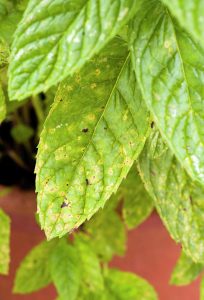
Mint rust occurs due to fungal spore infestation, and you’ll detect mint leaves turning bright orange or yellow during late summer.
In the end, these colors will turn fade to black. First of all, you should isolate and eliminate the infected parts from the plants.
Make sure, they don’t appear near the potting soil. Otherwise, it can infect other plants.
How to Prevent Mint Leaves From Mint Rust?
- At first, separate and eliminate the infected leaves or stems from the affected plant.
- Make sure the affected parts are disposed of properly, either by burning or throwing them away.
- It is better to start watering your mint plant from the bottom and then move upwards.
- You can trim off the excess or withered mint leaves from the plant and free up some space for better aeration.
Leaf Blight of Mint
Leaf blight of mint turn out in the winter or cold weather. When a plant enters into a dormant period, that turns whole leaf black.
It spreads swiftly and leads to entire mint leaves turn black and fall prematurely.
How to Fix it?
- Before winter arrives, attempt moving mint plant to a warmer or exposing location wherever it will get the maximum amount of sunlight.
- It’s better to isolate them from other plants due to prevent their spread.
- Remove the affected areas by cutting them off from the stem to make sure the rest of the mint stem grows healthy.
- To guarantee that there is no fungal transfer, wash the rest of the healthy mint leaves with water.
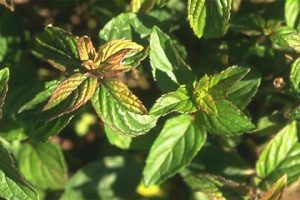
Verticillium Wilt of Mint
Verticillium Wilt
Verticillium wilt comes from a toxic fungus that occurs in the soil. Symptoms of this fungus include stunting, twisting and curling of the upper mint leaves.
The contaminated leave starts to change their color from green to yellow and eventually turn black.
Once fungi enter the soil, it stays there for several years. There is no fungicide treatment for verticillium wilt. Consequently, it is better to completely eliminate the mint plant.
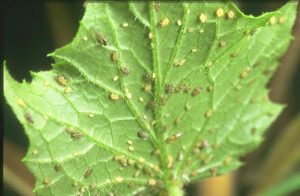
Mint Aphid
Mint Aphid is one of the insects that can turn your mint leaves black. It is mostly green, yellow, black, or brown.
Aphid causes mint leaves to turn black and eventually die. You can apply any insecticidal soap or neem oil to fix it.
If there is an enormous presence of aphids, then spraying insecticides on it can do the job right.
Some Important Tips to Remain Mint Plant Healthy and Vigorous
You can keep your mint plant stressed free and achieve healthy growth by ensuring the following guideline.
- Make sure to supply adequate lighting and sufficient water.
- Apply water when the soil appears dry to touch. Overwatering can hinder the growth of mint plant and lead to overgrown roots.
- In hot weather, Mint plant requires additional water.
- Grow your mint plant at least three inches deep and also leave additional space (3 inches or more) for the plant to reach its optimal growth at the root level.
- Young mint leaves are more susceptible to pests and diseases. So, you have to keep a close look at them.
- Keep your mint plant in bright area where it will get at least 4-5 hours full sun and avoid to remain it in fully shady area. Because it can not perform it’s best in fully shaded area.
- Mint plants do not tolerate high-salt content, therefore leach the soil at least two to three times to flush out any residues.
472 total views, 1 views today


